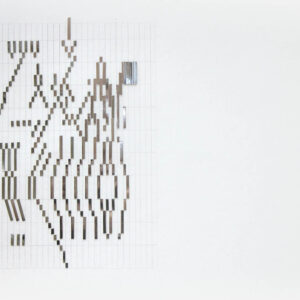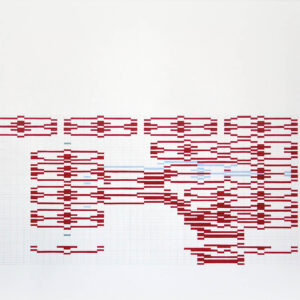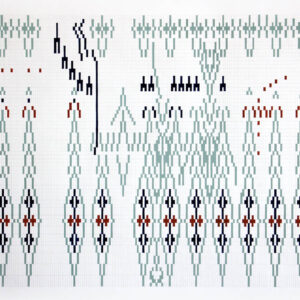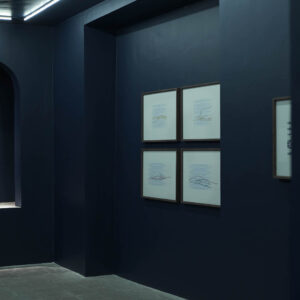Repetition
Solo Exhibition By Niusha Baraei10 to 24 September 2021“Repetition is clothing that never becomes worn, that fits snugly and comfortably, that never pulls nor hangs too loosely.”
Søren Kierkegaard
The theme of repetition is one that has been addressed on numerous occasions throughout the history of Iranian art, in architectural ornamentation, literature, and music. Considering my personal interest in abstract notions, I decided to begin this series with music. Working with repetitive visual patterns in a specific gridded space provides a platform for thought and contemplation. The concurrence of this approach with the high sensitivity and intricacy of visual execution and the lengthy creation process gives structure to my mind. The composition of the works is not much different from that of music itself; at times it is a collection of forms that evokes a sound, at others a single line.
–
Niusha Baraei
September 2021
Born in the Iranian city of Urmia in 1998, Niusha Baraei holds a Bachelor’s degree in Sculpture from Tehran University.
“Repetition” is her first solo exhibition and her first solo collaboration with INJA Gallery. This collection consists of 24 paintings of gouache and collage on cardboard in various dimensions.
We are faced with geometric paintings that initially appear alike and simple, while bearing a certain complexity.
Niusha is a cellist and flutist, with music playing an important part in her everyday life. Listening to music would help create forms in her mind, abstract forms that were geometric and categorized. She thus decided to depict these motifs through painting. She gradually moved towards Iranian forms such as Qajari mosaics, rug and carpet motifs and even certain architectural intricacies, utilizing them in her works.
With regard to the combination of Iranian art with her geometric motifs, Niusha states: “For me, the most important feature of Iranian art is the sensitivity and intricacy that exists in every single one of its related fields, whether visual arts, music, or literature. I injected this intricacy into my works through the use of tables with very small segments and the choice of a material that could control sensitivity in execution (gouache).“





































